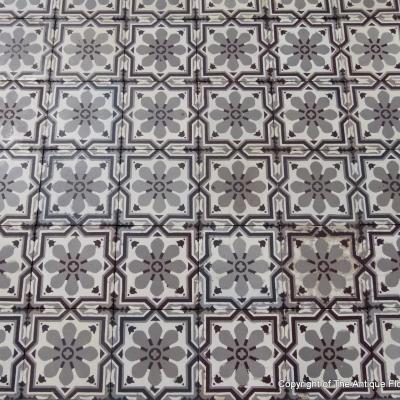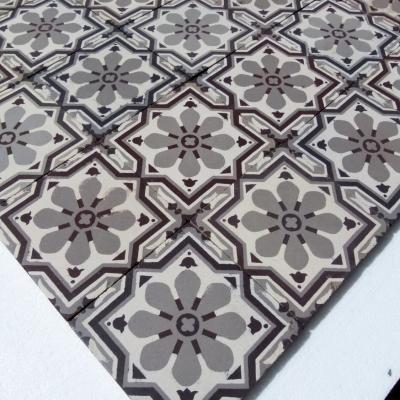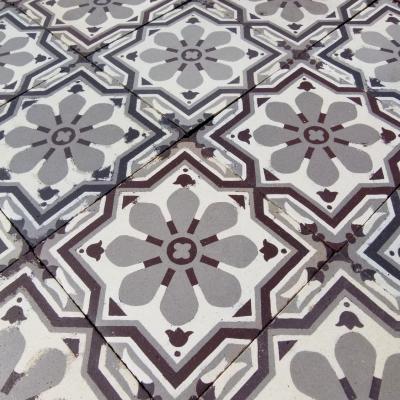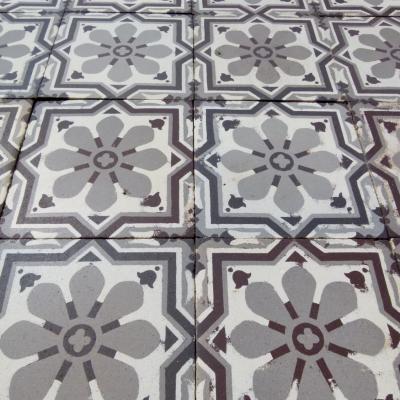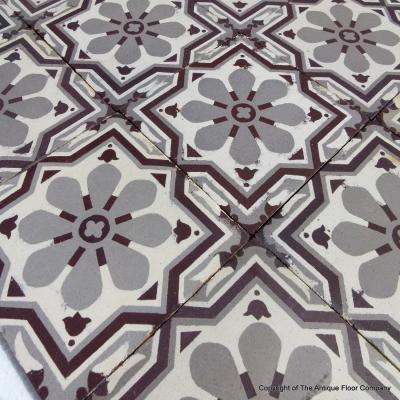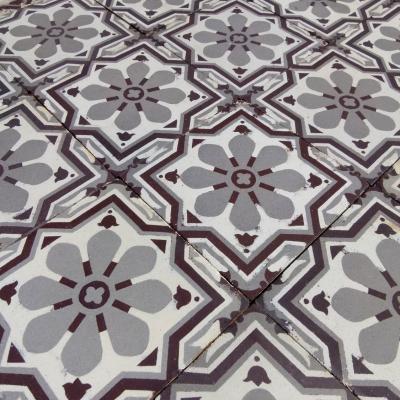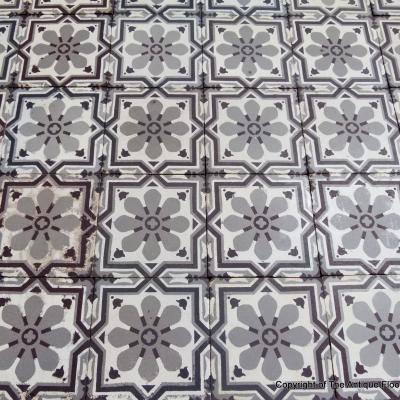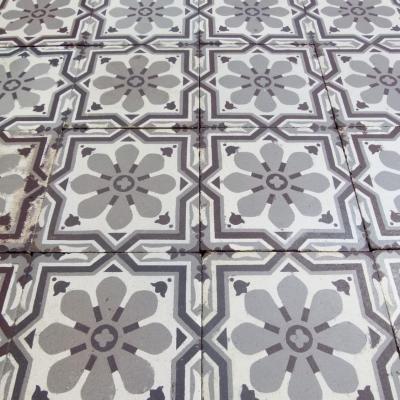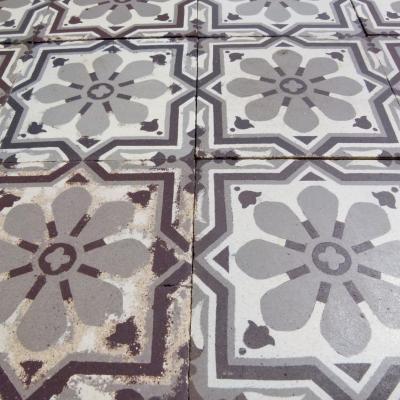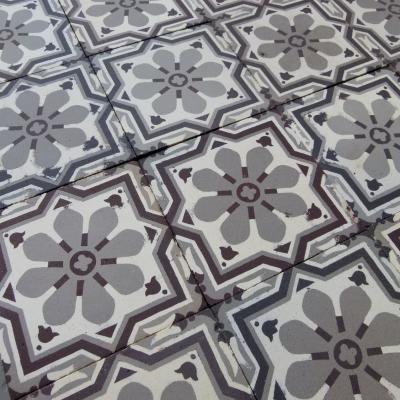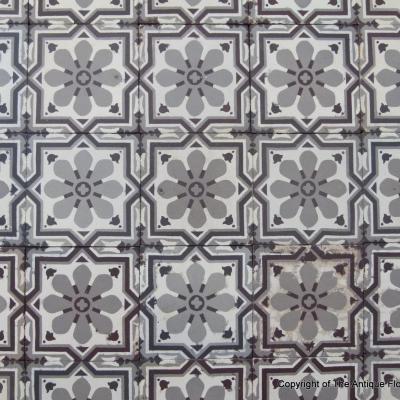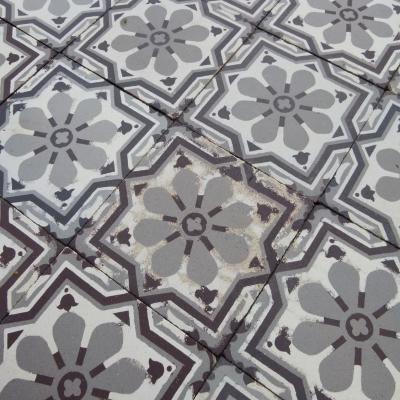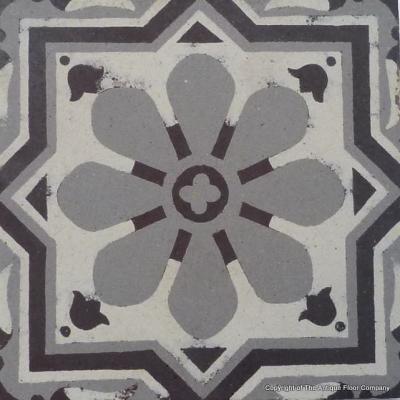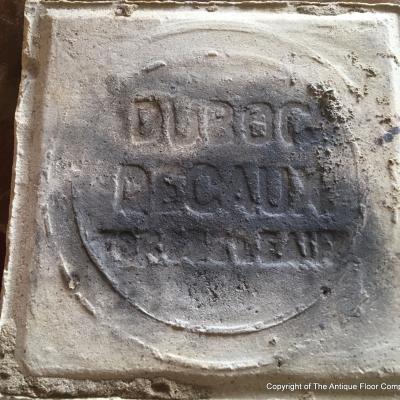8m2 / 86 sq ft. antique ceramic floor with beautiful patina c.1870
In a cool palette of greys, charcoal and white, these ceramic field tiles, 16cm / 6.3 inch square, have been reclaimed from an old pharmacy in the Burgundian village of Verdun-Sur-Le-Doubs and open out in a classical tessellation across two repeating motifs.
The tiles are reverse-stamped and were produced by Duboc-Decaux-Forges-les-Eaux, a company active in ceramic encaustic tile production around 1870. Forges‑les‑Eaux was once home to several faïenceries from the late 18th century through the 19th century, starting with Georges Wood—an English potter—who founded the first workshop in 1797. The industry flourished along with abundant local white clay (used for well‑regarded “terre de pipe” faïence) and later the thicker “cul noir” ware made from grey clay and coated underneath with dark manganese glaze.
By the mid‑1800s, up to five ceramic production sites operated in the town, producing both finer tableware (with hand‑painted and sponged decoration) and more utilitarian wares for everyday use. The activity largely ceased by around 1890, with most original buildings demolished (only one of Wood’s original structures at Avenue des Sources survives).
These antique ceramic tiles showcase a refined and restrained design, rooted in late 19th to early 20th-century European utility style, often found in apothecaries, cafés, and civic buildings of the era. The overall pattern is composed of a tightly arranged grid of repeating floral-geometric motifs, giving the floor a sense of balance, calm, and subdued elegance. Each tile features a central eight-petaled floral rosette in soft grey and taupe tones, encircled by a pale cream background. The petals are symmetrically spaced and slightly pointed, arranged to form a star-like flower that subtly emerges from the tile's surface. This motif is framed by a stylized border of right angles and flourishes in a darker brownish-maroon hue, which creates a visual grid that connects each tile seamlessly to the next. The repetition of the floral motif and border design forms an optical illusion of interlocking stars and squares, lending a quiet rhythm and unity to the floor. The subdued monochromatic palette of greys, off-whites, and earthy browns adds to the overall sense of timelessness and practicality, while still retaining decorative appeal. This tilework is emblematic of a period where utility and ornament coexisted—where floors were meant to be both durable and visually pleasant, often seen in spaces that required cleanliness, order, and understated beauty.
Owing to their production in small batches, there is subtle variation in tones, slip depth and motif detail and some tiles display groutable edge nibbles or small chips. This patina and variation in tone across the tiles also suggest age and authenticity, contributing to the charm of these historically significant surfaces. All the tiles have been quality controlled and, at 15mm / 0.6 inches thick, these are quality period ceramics.
A highly fired tile it can be laid inside or outside the home and will work efficiently with underfloor heating systems.
There are 308 field tiles available, totalling 8m2 / 86 sq ft. Should a border tile be desired for the floor, then we may have options available which can be seen by clicking here
NOTE Antique tiles were most commonly made in single or two tile moulds. Before current computer automation methods their moulds were made by hand and the colour slips mixed by eye. Kiln temperatures could also be variable, as could the firing time. The result is that tiles often display subtle size and thickness variations and there can be tonal variations in colours, owing to the slip mixing and/or firing time. All of this makes these handmade tiles unique and adds to their charm. Some floors display their subtle variations in size and tones, some not, but when photographing we always take a random section of the floor so that it is representative of the whole. A tiler should always dry lay a section of the tiles to familiarise himself with them before starting to fix lay.
CE254



